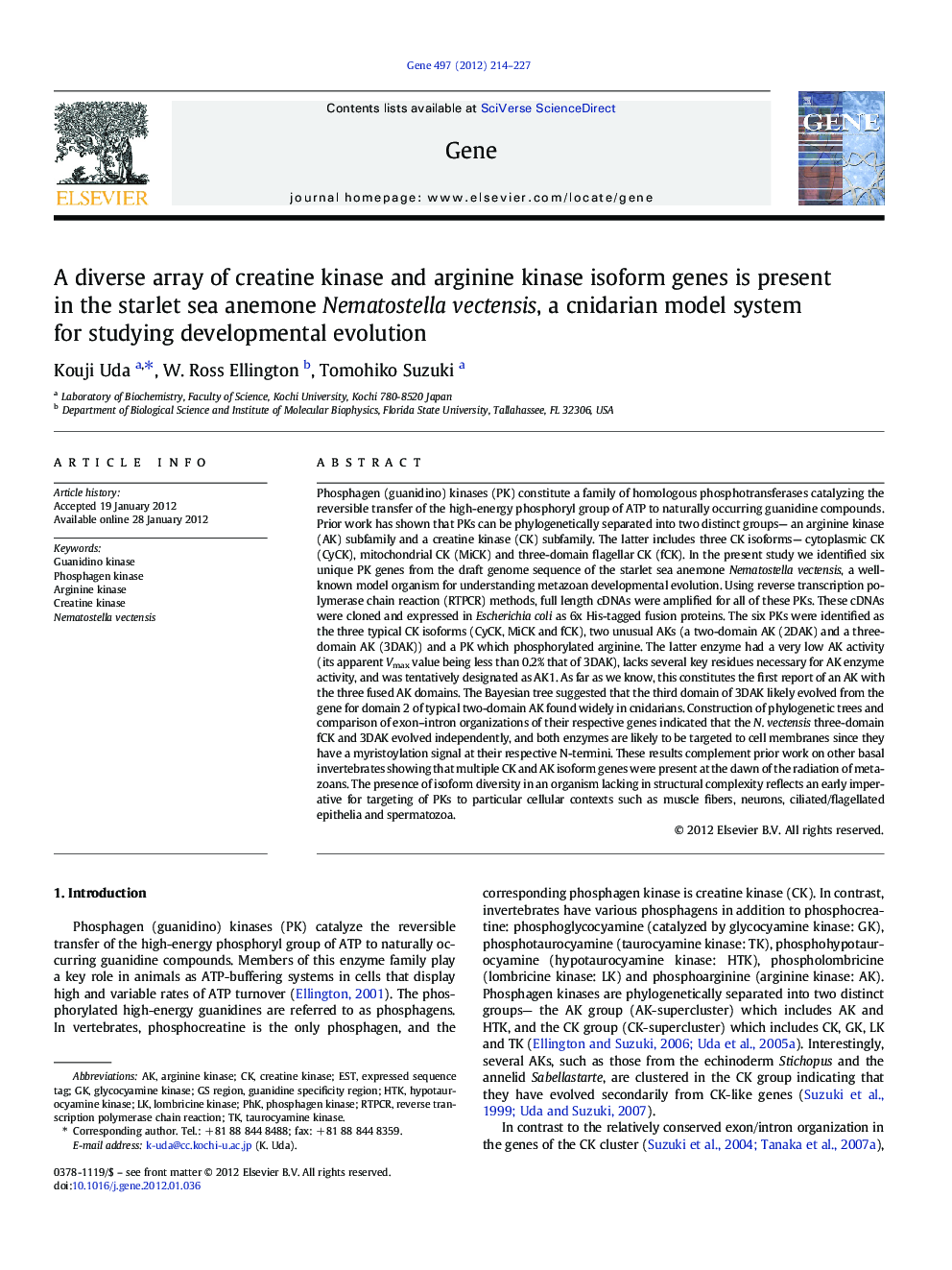| Article ID | Journal | Published Year | Pages | File Type |
|---|---|---|---|---|
| 5907486 | Gene | 2012 | 14 Pages |
Phosphagen (guanidino) kinases (PK) constitute a family of homologous phosphotransferases catalyzing the reversible transfer of the high-energy phosphoryl group of ATP to naturally occurring guanidine compounds. Prior work has shown that PKs can be phylogenetically separated into two distinct groups- an arginine kinase (AK) subfamily and a creatine kinase (CK) subfamily. The latter includes three CK isoforms- cytoplasmic CK (CyCK), mitochondrial CK (MiCK) and three-domain flagellar CK (fCK). In the present study we identified six unique PK genes from the draft genome sequence of the starlet sea anemone Nematostella vectensis, a well-known model organism for understanding metazoan developmental evolution. Using reverse transcription polymerase chain reaction (RTPCR) methods, full length cDNAs were amplified for all of these PKs. These cDNAs were cloned and expressed in Escherichia coli as 6x His-tagged fusion proteins. The six PKs were identified as the three typical CK isoforms (CyCK, MiCK and fCK), two unusual AKs (a two-domain AK (2DAK) and a three-domain AK (3DAK)) and a PK which phosphorylated arginine. The latter enzyme had a very low AK activity (its apparent Vmax value being less than 0.2% that of 3DAK), lacks several key residues necessary for AK enzyme activity, and was tentatively designated as AK1. As far as we know, this constitutes the first report of an AK with the three fused AK domains. The Bayesian tree suggested that the third domain of 3DAK likely evolved from the gene for domain 2 of typical two-domain AK found widely in cnidarians. Construction of phylogenetic trees and comparison of exon-intron organizations of their respective genes indicated that the N. vectensis three-domain fCK and 3DAK evolved independently, and both enzymes are likely to be targeted to cell membranes since they have a myristoylation signal at their respective N-termini. These results complement prior work on other basal invertebrates showing that multiple CK and AK isoform genes were present at the dawn of the radiation of metazoans. The presence of isoform diversity in an organism lacking in structural complexity reflects an early imperative for targeting of PKs to particular cellular contexts such as muscle fibers, neurons, ciliated/flagellated epithelia and spermatozoa.
⺠We have expressed six unique Phosphagen kinase genes from the Nematostella vectensis. ⺠The exon/intron organizations of the 78 phosphagen kinases genes were compared. ⺠Multiple CK and AK isoform genes were present at Nematostella.
